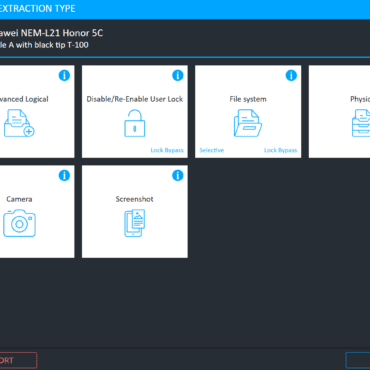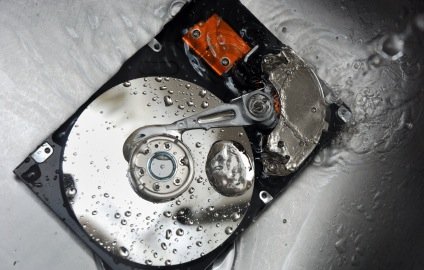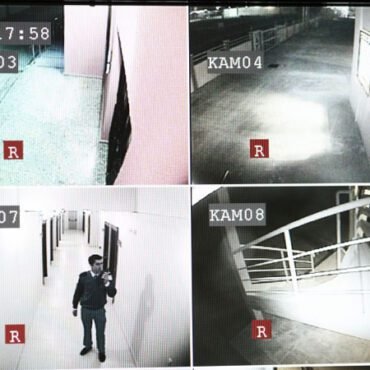Introduction
In today’s digital era, data is the backbone of almost every activity—whether it’s running a business, investigating crimes, or preserving personal memories. Losing this data can be devastating, both emotionally and financially. Unfortunately, disasters such as fires, floods, earthquakes, and electrical surges strike without warning, leaving behind damaged devices like laptops, hard drives, smartphones, and servers.
At first glance, these devices often look beyond repair—burnt by fire, soaked in water, or shattered by physical impact. But here’s the truth: data is far more resilient than people think. Even in extreme conditions, traces of information often survive, waiting to be carefully recovered by experts using specialised tools and forensic methods.
Common Disaster Scenarios Affecting Data
1. Fire Damage
Fire is one of the most destructive threats to electronic devices. Hard drives may be charred, plastics melted, and circuit boards reduced to ash. Yet surprisingly, the magnetic data stored on hard drive platters or flash memory chips often survives beyond the visible destruction.
Challenges:
-
Extreme heat can warp platters inside HDDs.
-
PCBs (Printed Circuit Boards) are often burned out.
-
Smoke and ash particles contaminate delicate drive mechanisms.
Example: In a corporate fire incident, a server rack exposed to flames had all drives destroyed on the surface. However, using platter cleaning and donor components, nearly 70% of the data was recovered, helping the company continue operations.
2. Water Damage
Water can reach devices through floods, leaking pipes, or firefighting efforts. While it causes short circuits and corrosion, water alone doesn’t always erase the data—it just makes recovery more time-sensitive.
Challenges:
-
Corrosion starts quickly, especially with saltwater exposure.
-
HDDs may seize up as internal components rust.
-
Smartphones and SSDs suffer electronic failure due to liquid penetration
Example: During a flood, dozens of laptops from a government office were submerged. Recovery teams salvaged critical documents by imaging drives immediately after drying and corrosion treatment.
3. Natural Disasters (Earthquakes, Storms, etc.)
Events like earthquakes, hurricanes, and tornadoes bring a mix of physical impact, dust, and debris. Devices may be crushed, displaced, or left exposed to the elements for days.
Challenges:
-
Cracked hard drive platters or shattered SSD boards.
-
Head crashes in HDDs from sudden shocks.
-
RAID arrays are physically dismantled or lost.
Example: After an earthquake, a financial institution’s RAID server was crushed. Forensic engineers virtually reconstructed the RAID structure from surviving drives, recovering 85% of critical financial records.
4. Electrical Surges
Lightning strikes, faulty wiring, or power fluctuations can instantly fry sensitive electronics. Unlike fire or water, the damage here is often invisible but equally destructive.
Challenges:
-
Burned or blown controller chips.
-
Corrupted firmware is preventing drives from spinning up.
-
Partial file corruption during sudden shutdowns.
Key Techniques Used in Disaster Data Recovery
-
Clean Room Recovery
Disaster-damaged devices are handled in ISO-certified clean rooms where dust and contaminants are eliminated. This ensures platters and chips aren’t further damaged during recovery.
-
Imaging Damaged Media
Experts avoid working directly on the original device. Instead, they create a bit-by-bit forensic image, preserving evidence and allowing multiple recovery attempts without risk.
-
Chip-Off Forensics
For smartphones and SSDs beyond repair, memory chips are physically removed and read with specialised programmers. This bypasses damaged electronics and retrieves raw data.
-
RAID & Server Rebuilds
Enterprise storage often relies on RAID arrays. Even if multiple drives fail, experts use RAID reconstruction software to rebuild the array virtually.
-
Data Repair Software
Once raw data is extracted, advanced forensic tools are used to rebuild partitions, recover deleted files, and repair corrupted systems.
Role of Forensic Experts in Disaster Recovery
While IT recovery services focus on accessibility, forensic data recovery emphasises accuracy, integrity, and legality. This is crucial when data is part of a criminal investigation or legal dispute.
-
Data Authenticity: Forensic experts ensure no tampering occurs during recovery.
-
Chain of Custody: Documentation ensures the data is legally admissible.
-
Privacy Protection: Sensitive information remains secure throughout the process.
For example, in arson investigations, burnt laptops are often recovered by forensic teams. Extracted browsing history, financial transactions, or communication logs can become key evidence in court.
Real-World Applications
-
Law Enforcement: Recovering evidence from waterlogged or burnt devices in criminal cases.
-
Corporations: Restoring business-critical databases after floods or server room fires.
-
Individuals: Salvaging priceless family photos or documents from fire-damaged smartphones.
-
Government: Preserving sensitive citizen records after natural disasters.
Preventing Permanent Data Loss in Disasters
While recovery is possible, prevention is the best defence. Here are key steps to protect data:
-
Regular Backups – Maintain both cloud and offline encrypted backups.
-
Fireproof & Waterproof Safes – Store backup drives in secure cabinets.
-
Surge Protection & UPS – Prevent damage from power fluctuations.
-
Disaster Recovery Plans – Businesses should have documented strategies to respond quickly.
Conclusion
Disasters like fire, floods, earthquakes, and electrical surges may destroy devices, but don’t always erase the data. With advanced forensic methods—clean room recovery, chip-off forensics, RAID reconstruction, and forensic imaging—valuable information can often be recovered against the odds.
Whether it’s a company restoring operations after a fire, law enforcement securing evidence from a flood-damaged phone, or an individual retrieving lost memories, disaster data recovery ensures that even in the harshest conditions, information is not lost forever.
At the same time, adopting preventive measures like regular backups and disaster recovery planning can make the difference between temporary disruption and permanent loss.





Post comments (0)